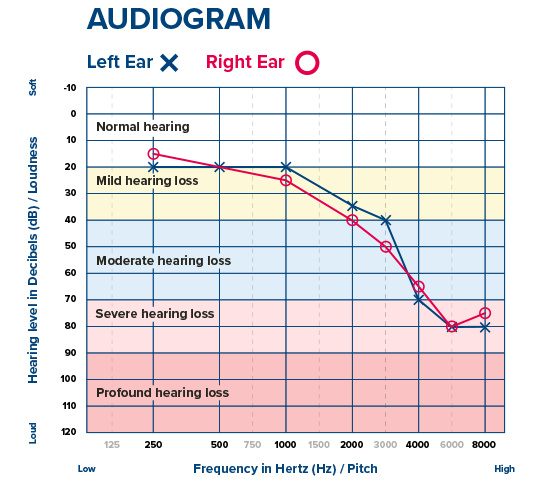Compare degrees of hearing loss
The severity of your hearing loss is usually measured in two ways:
- Loudness: How loud does a sound need to be in order for you to hear it?
- Pitch: Which frequencies are difficult for you to hear?
Below are the main categories for hearing loss levels with examples of sounds that might be inaudible at a given level (based on their loudness and pitch.)








